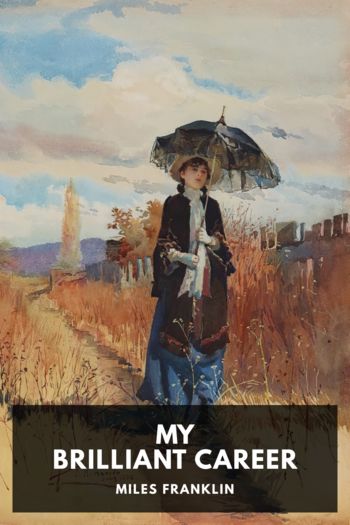Master of His Fate James Tobin (free e books to read online .txt) 📖

- Author: James Tobin
Book online «Master of His Fate James Tobin (free e books to read online .txt) 📖». Author James Tobin
He had hardly awakened when he heard the noise of trees being felled nearby, and when he got outside, he saw a tractor pushing away the logs, making way for new construction. Then carpenters began tearing the old siding off his cottage to replace it with new. Just before 10:00 A.M., Hasbrouck was picked up by car and driven with a few other patients down a sloping dirt road to the two pools—a slightly smaller one just for the polio guests, a larger one for members of the public and visitors. He met Mahoney, who struck him as “an excellent executive.”
Around the pool Hasbrouck found clean, new changing rooms where each guest was presented with two fresh towels every morning, just as in a fine resort. In the air he caught a faint whiff of something like sulfur wafting up from the sparkling water. He learned the pools were emptied each evening, then scrubbed, whereupon the pipes were reopened to allow fresh water to gush in. When he lifted a handful to his mouth, it tasted not of chemicals, exactly, but decidedly “soft.”
He slid into the pool and soon understood what Roosevelt had been telling him about its unusual qualities. The experience was “just splendid in every way,” he said in a letter to his father. “Its temperature is mildly warm to the touch, and the whole pool stays so mild that today I stayed in for what seemed a very long time without having any desire to get out. I walk freely all over the pool.” When he finally got out, he rested for a while, as patients were instructed, but “I felt so refreshed from the swimming that I had little need of rest.”
Back at his cottage after lunch, Hasbrouck heard the whirring clatter of a Ford Model T pulling up outside. He looked out to see Franklin Roosevelt at the wheel, smiling his giant smile.
Hasbrouck said later it was he who had given FDR the idea of rigging up an automobile with hand controls for disabled drivers. Whether it had been his idea or someone else’s—possibly FDR’s own—FDR had jumped on it. During his summer visit to Warm Springs in 1926, he’d picked up an old Model T for fifty dollars and put a local mechanic to work on it. Using FDR’s sketch, the mechanic attached metal rods to the foot pedals, then brought the rods up through the dashboard and capped them with handles, which FDR could push or pull to accelerate or put on the brakes. He tried it out and pronounced it a spectacular innovation. It was the first time since 1921 that he had achieved fully independent mobility, and from then on he seized every chance to drive himself and his passengers up and down the village roads and out into the countryside. At both Warm Springs and the estate at Hyde Park, he would never again be without a car he could drive.
FDR waved Hasbrouck into the car and took off down the lane to give his young friend a full tour. There was much to see—far more than when FDR first saw the property in 1924. Bulldozers were carving new roads in the red earth. From deep inside the old Meriwether Inn came the racket of carpenters. The “push boys”—local youths hired for the purpose—were taking patients in wheelchairs down to the pools, where Helena Mahoney’s “physios,” as the physical therapists were called, were putting patients through their demanding exercise routines and walking practice. Turf was being seeded on the golf course. In every building, whether remodeled or new, ramps were being built in place of steps and stairs.
What Hasbrouck and other newcomers saw was the construction of a place seldom seen before—a center devoted entirely to the physical and emotional well-being of people who were pitied or shunned wherever else they went. It was not a forbidding sanitarium, all white starch and somber silence, but a lively sanctuary from stigma where the patients grew accustomed to the same respect, social engagement, and just plain fun that people without disabilities could take for granted wherever they went.
“When we finished with the work at hand, we’d have what we called water polo,” recalled a Georgian who served as one of the push boys. “It really wasn’t water polo; it was ‘try to get the ball away from Mr. Roosevelt.’ He would sit in the middle of the pool … From the waist down he was skin and bones, but from the waist up, he was a powerful man. He’d hold that rubber ball high above his head in the air and just dare you to come and get it. Every time I’d get close, he’d take his powerful hands and push me down. When he pushed, you went straight to the bottom of the pool.”
At night, people who had been pointed at with pity, even fear, on the streets of their hometowns found fresh flowers on tables set for dinner, with free-wheeling evenings of poker and bridge to follow. They competed in parlor games—how many words could be made from the letters in C-o-n-s-t-a-n-t-i-n-o-p-l-e?—and watched movies. There was to be a school for the younger patients, plus a clinic, a library, and shops. On cool evenings there were blazing logs in the fireplaces. Every week, auto caravans carried everyone out through the peach orchards to picnic spots. On special nights the big pool was lit for moonlit swims. Soon, engagement announcements would be seen on the big bulletin board.
It was a summer colony infused with the informal spirit of outdoor fun that Franklin Roosevelt believed in like a creed and charged with a special sense of purpose. Stronger muscles and better coordination were only part of it. The spirit of the place drew





Comments (0)